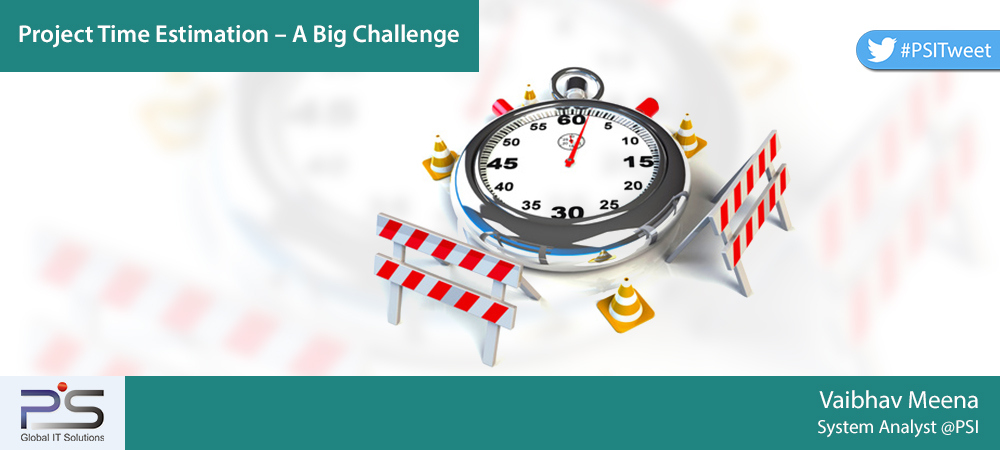Accuracy in overall time estimation is a crucial skill required for project management, which helps anticipate the project duration and costs involved. If the project time estimation is not proper then it can lead to issues like over-estimation or under-estimation. Under-estimating a project is disturbing for all team members as it leads to an additional workload of the project, whereas in over-estimating the duration, the client becomes sceptical about your expertise and team productivity is hampered.
The success of a project is primarily judged on the adherence to the project delivery schedule. To improve project management skills we need to create practical targets through proper estimation.
Factors to be considered for estimating timelines in a detailed manner are:
1) Proper requirement gathering and analysis: To estimate a project better one needs a proper understanding of the business requirements. The methodologies helpful in the requirement analysis are Business Requirement Analysis, Drill Down, and Gap Analysis.
2) Prioritisation of tasks: The workflow of tasks/activity is created to understand the worth of a task.
3) Team participation: The team should contribute in projecting time schedule as they only have to execute it later. Moreover, ownership brings in more responsibility and accountability in the team.
4) Proper estimation: Using divide and conquer concept, we can create estimation. The project is divided into task categories along with the project assumptions and constraints. The resource productivity varies and unforeseen factors of application environment failure, problem-solving, and team and client meetings are to be taken into account.
5) Methods used to estimate: Following methods can be adopted in estimation:
a. Comparative Estimation- This method uses the experience from previous projects conducts a comparative analysis for the estimation. The success rate of previous projects is to be considered, while selecting the projects.
b. Bottom-Up Estimation- A time-consuming method as it estimates time for all tasks involved in a detailed manner.
c. Top-Down Estimation- A combination of comparative & bottom-up estimation, the project tasks are divided to calculate the efforts and cost.
d. Parametric Estimation- The scientific and mathematical way wherein we calculate the costs and time required for all deliverables and sum the estimation for the project.
Apart from these, we need to consider the time consumed in allied activities of team meetings, reporting, client interactions, unit testing and system testing. Accurate estimation is the significant point for the success of any project. We can assure the success of the estimation by the proper task distribution in team along with these aspects discussed above.
Image Courtesy: http://media.licdn.comAccuracy in overall time estimation is a crucial skill required for project management, which helps anticipate the project duration and costs involved. If the project time estimation is not proper then it can lead to issues like over-estimation or under-estimation. Under-estimating a project is disturbing for all team members as it leads to an additional workload of the project, whereas in over-estimating the duration, the client becomes sceptical about your expertise and team productivity is hampered.
The success of a project is primarily judged on the adherence to the project delivery schedule. To improve project management skills we need to create practical targets through proper estimation.
Factors to be considered for estimating timelines in a detailed manner are:
1) Proper requirement gathering and analysis: To estimate a project better one needs a proper understanding of the business requirements. The methodologies helpful in the requirement analysis are Business Requirement Analysis, Drill Down, and Gap Analysis.
2) Prioritisation of tasks: The workflow of tasks/activity is created to understand the worth of a task.
3) Team participation: The team should contribute in projecting time schedule as they only have to execute it later. Moreover, ownership brings in more responsibility and accountability in the team.
4) Proper estimation: Using divide and conquer concept, we can create estimation. The project is divided into task categories along with the project assumptions and constraints. The resource productivity varies and unforeseen factors of application environment failure, problem-solving, and team and client meetings are to be taken into account.
5) Methods used to estimate: Following methods can be adopted in estimation:
a. Comparative Estimation- This method uses the experience from previous projects conducts a comparative analysis for the estimation. The success rate of previous projects is to be considered, while selecting the projects.
b. Bottom-Up Estimation- A time-consuming method as it estimates time for all tasks involved in a detailed manner.
c. Top-Down Estimation- A combination of comparative & bottom up estimation, the project tasks are divided to calculate the efforts and cost.
d. Parametric Estimation- The scientific and mathematical way wherein we calculate the costs and time required for all deliverables and sum the estimation for the project.
Apart from these we need to consider the time consumed in allied activities of team meetings, reporting, client interactions, unit testing, and system testing. Accurate estimation is the significant point for the success of any project. We can assure the success of the estimation by the proper task distribution in team along with these aspects discussed above.
Image Courtesy: http://media.licdn.com[:]
Pratham Software (PSI) specializes in enterprise modernization and B2B SaaS, catering to clients across North America, Europe, Australia, and India. PSI partners with clients to drive digital adoption and modernization, leveraging expertise in Cloud, AI, and Data Science.









